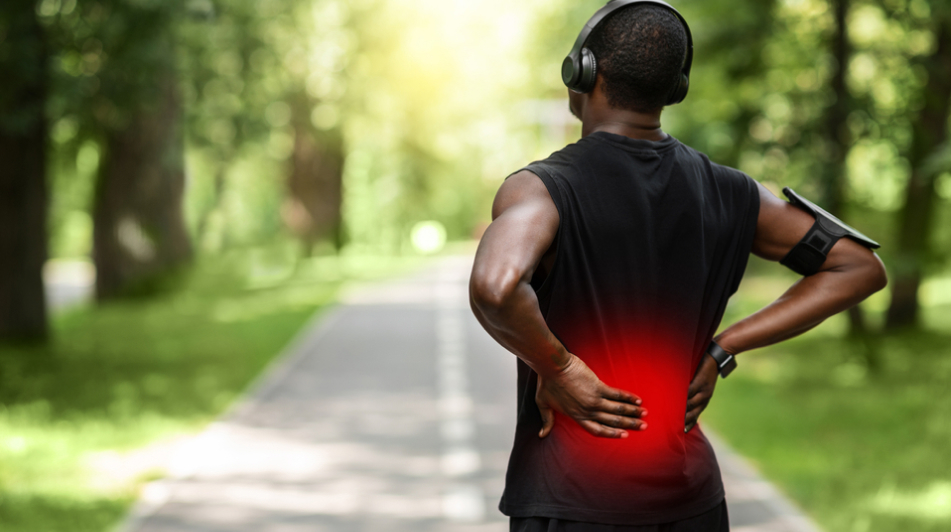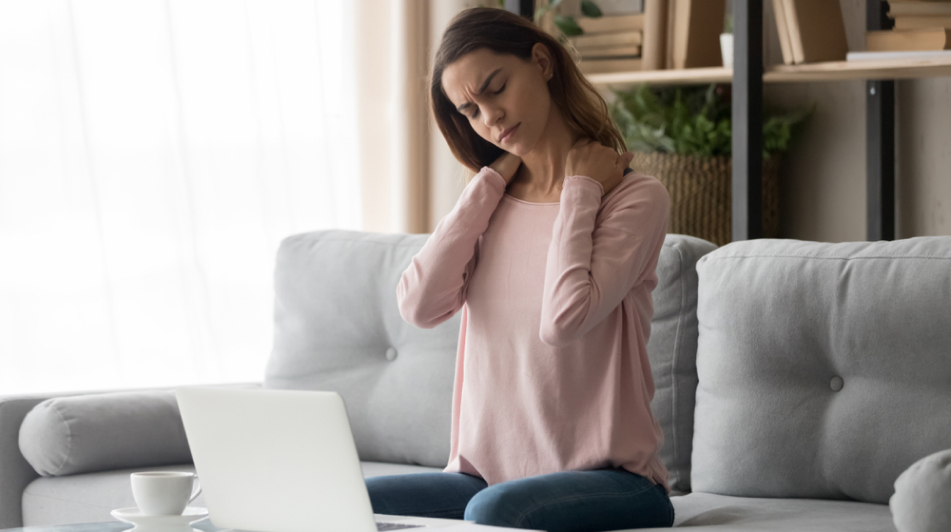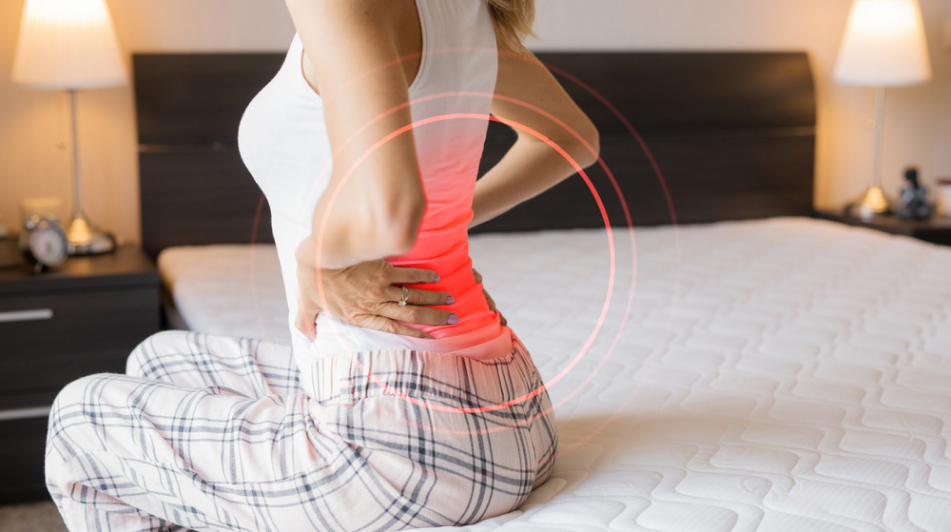Back Pain Treatment in Liverpool
'Chiropractic Specialists in Back Pain Relief'
Back Pain Treatment in Liverpool
The back is a complex structure of bone and muscle, supported by tendons, and ligaments. It is estimated that 80% of the population will suffer from back pain at some point in their life and lower back pain is the most common area.
At Liverpool Chiropractic Clinic our specialist chiropractors can provide you with back pain treatment and relief.


Does Any of This Sound Like You?
- You thought your back pain would just go away on it's own - but it didn't?
- Your back pain finally subsided....just to return a few days or weeks later?
- You visited the Doctor, just to be told to 'rest' and 'take some painkillers' - but weeks later you are still experiencing back pain?
- You feel stiff or have noticed reduced mobility in your back ' - You finally have the doctor refer you to a NHS physio - but you're still waiting months later.
- You finally see the NHS physio just to be given a sheet of exercises that do little to ease your back pain.
- After all this you decide to try some more rest, but you are in just as much pain and getting stiffer.
- You are told by your friends and family that it's 'just a part of life' and 'everybody gets aches and pains as they get older'.
- You can no longer do the things you used to enjoy.
Sound Familiar?
Stop Settling for Short – Term ‘fixes’ and Get Real Long – Lasting Back Pain Relief Today
We Pride ourselves on providing exceptional care for people just like you who want to be more active and mobile, free from painkillers, without the fear of back pain holding you back.
If any of this sounds like you – we would love to help you at one of our clinics.
We’ve helped so many people just like you, who have all goner through the same thing.
Click the link below to speak to one of our team.
There is no obligation to book any appointments with us after the call is over. Our goal is to help you make the right decision about what to do next for the best.

We Can Help You With
Acute Back Pain
Description
Acute back pain is most often caused by a sudden injury / accident and is a type of pain that typically lasts less than 3 to 6 months, and gradually resolves as the injured tissues heal.
Causes
- Disc Herniation
- Strain / Sprain / Tear of Muscles and Ligaments supporting the back
- Muscle Spasm
- Compression Fracture
- Sciatica
Signs & Symptoms
Sudden onset of
- Pain
- Aches
- Weakness
- Numbness
- Tingling
Chronic Back Pain
Description
Chronic back pain is defined as pain that persists for 12 weeks or longer, even after an initial injury or underlying cause of acute low back pain has been treated. About 20 percent of people affected by acute low back pain develop chronic low back pain with persistent symptoms at one year.
Causes
- Spinal conditions such as; Degenerative Disc Disease, Spinal Stenosis & spondylolisthesis
- Joint Fixations / Restrictions
- Injury
Signs & Symptoms
Persistent
- Pain
- Aches
- Weakness
- Numbness
- TinglinChronic
Arthritis
Description
There are more than 200 types of arthritis. Common arthritis symptoms of inflammation, pain, and stiffness are usually caused by degenerative arthritis (osteoarthritis). Osteoarthritis is the most common type of arthritis in the UK.
Other types of arthritis include;
- Osteoarthritis: This wear and tear form of arthritis is the most common type. Cartilage gets worn down over the years causing friction and problems.
- Rheumatoid arthritis: This is an autoimmune condition where the body’s immune system defence wrongly attacks the joints, causing pain and inflammation.
- Gout: This is caused by uric acid forming into crystals in the joint causing pain and swelling.
- Juvenile idiopathic arthritis (JIA). This affects children under 16 and the cause is not known.
- Septic (infectious) arthritis: This is caused by a bacterial or viral infection of the joints, usually triggered by another disease or injury.
- Psoriatic arthritis. This type of arthritis affects people with the skin condition psoriasis.
Causes
Different types of arthritis have different risk factors, which include:
- Getting older
- Gender
- Being obese or overweight and putting a joint under strain
- Jobs or sports putting extra strain on joints
- Immune system problems
- Other health conditions.
Signs & Symptoms
This form of athritis results in inflammation of the tendons, synovial sheaths and bursae (sacks of fluid which allow smooth movement of muscles/tendons over bone). Flare-ups usually occur, where the symptoms are exacerbated for a period of time. During a flare-up, joints will become stiff, swollen, red and painful. The small joints of your fingers, hands, wrists, feet and ankles are most commonly affected.
Facet Dysfunction
Description
Pain stemming from the facet joints is termed “Facet Dysfunction.” The facet joints become inflamed and may cause pain, soreness and stiffness. Patients often report increased pain with extension or prolonged periods of inactivity like sitting or standing too long. Changing positions often improves pain. Facet Dysfunction pain may feel worse in the morning and improve after moving around as the day progresses. However, for those who work sitting all day with poor posture, they may experience pain throughout the day
Causes
Facet Dysfunction can be caused by trauma, such as a whiplash injury of the neck. Abnormal posture and alignment can overload spinal tissues, including the facet joints, and cause inflammation and pain in these joints. More commonly, degenerative changes in the cervical, thoracic and lumbar spine can lead to abnormal stress and strain. This results in increased loads on the facet joints.
Signs & Symptoms
- Cervical facet joint pain can be felt in the areas of the base of the skull, upper back and shoulders, mid-back or neck. Some patients may present with frequent headaches or even ringing in the ears.
- Thoracic facet Dysfunction is less common than cervical and lumbar facet Dysfunction and is probably related to restricted motion at these levels due to the rigidity of the thoracic spine. Pain experienced in thoracic facet Dysfunction is likely to be felt locally near the affected segment near the midline.
- The lumbar spine has considerable motion and high compressive forces. Facet pain from these joints is quite common. Pain is usually felt directly over the affected joints, but may also be felt in the buttocks, hips, groin, and back of the thighs depending on which facet joint is injured.
Leg Length Inequality
Description
Leg length discrepancies can be classified as a structural leg length discrepancy or a functional leg length discrepancy. A structural leg length discrepancy is a hereditary circumstance that one leg is simply longer than the other leg. This is determined if the patient’s pelvis and sacroiliac joints are symmetrical and the leg length is simply due to one leg truly being longer than the other.
Functional leg length discrepancy is diagnosed when there is a torsion or pelvic rotation/ obliquity, commonly a sacroiliac joint dysfunction, which causes one leg to function as though it is longer or shorter than the other. In order to determine if a true structural discrepancy exists, the physical therapist must treat the pelvis and return it to a neutral position before measuring for the leg length discrepancy. Once the pelvis is symmetrical it is determined if the leg length discrepancy remains or if it goes away, if it goes away it is classified as functional. If it remains and has a measurable difference, it is a structural leg length discrepancy.
Causes
Leg length discrepancies can be caused by poor alignment of the pelvis or simply because one leg is structurally longer than the other. Regardless of the reason, your body wants to be symmetrical and will do its best to compensate for the length difference. The greater the leg length difference, the earlier the symptoms will present themselves to the patient. Specific diagnoses that coincide with leg length discrepancy include: scoliosis, lumbar herniated discs, sacroiliitis, pelvic obliquity, greater trochanteric bursitis, hip arthritis, piriformis syndrome, patellofemoral syndrome and foot pronation. Other potential causes could be due to an injury (such as a fracture), bone disease, bone tumors, congenital problems (present at birth) or from a neuromuscular problem.
Signs & Symptoms
- An obvious observance of one leg being longer than the other
- Affected posture
- Problems with gait (manner of walking)
- Pain in the lower back, hip, ankle or knee
Scoliosis
Description
The term scoliosis refers to an abnormal curvature of the spine in a patient who has finished growing. Scoliosis is an abnormal curvature of the spine that affects approximately seven million people in the United States. The spine curves abnormally to the right or left side and also involves a twisting or rotation of the bones of the spine. As the vertebrae rotate, this may cause clinical change in the appearance of the patient’s back and may also lead to painful degeneration of the spine leading to back pain or nerve pain or in severe cases alter lung and heart function.
Causes
- Childhood Curvature that was never treated
- Disc degeneration
- Compression fracture
- Spinal stenosis
- Osteoporosis
- A hemivertebra (half a vertebra) refers to a condition where the bone of the spine does not grow properly
- Unilateral bar (or block vertebra) is a condition in which the bones of the spine do not properly separate from each other
Symptoms
Many patients with adult scoliosis do not have any specific symptoms. Scoliosis symptoms vary based on the curve severity. Some patients first notice that their clothes no longer fit correctly. As the curvature leads to disc degeneration and changes in the bones of the spine, a number of symptoms can occur. Symptoms may include back pain, spinal stiffness and even nerve pain. The abnormal curvature may cause uneven hips or an abnormal gait and patients may have a leg length discrepancy. Patients may notice that one shoulder is higher than the other, a prominent shoulder blade, or uneven skin folds. There may be difficulty with standing or sitting upright and problems with balance. In severe cases the curvature can progress to affect heart or lung function in the thoracic spine.
Lower Crossed Posture
Description
Lower-Crossed Syndrome (LCS) is also referred to as distal or pelvic crossed syndrome. In LCS, tightness of the thoracolumbar extensors crosses with tightness of the iliopsoas and rectus femoris. Weakness of the deep abdominal muscles crosses with weakness of the gluteus maximus and medius.
Causes
- Prolonged sitting, particularly with bad posture
- Physical inactivity
- Regular performance of sports and activities that involve an uneven stimulation of the muscles that are involved in LCS
- Poor exercise technique (e.g., lumbar hyperextension in the deadlift, press, and squat).
- Imbalanced strength training (e.g., a lot more lower back and/or hip flexor training than glute and/or abdominal training)
Signs & Symptoms
- Anterior Pelvic Tilt (APT). While a certain degree of APT is perfectly normal – and usually unproblematic – excessive APT leads to poor exercise technique and increased risk of knee pain, lower back pain/injuries, and other musculoskeletal disorders that run rampant in the modern world.
- Increased lower back curve (sway back)
- “Bulging” (not necessarily fat) abdomen
- Knee hyperextension
- Lower back pain
- Poor exercise technique. Individuals with LCS typically display poor movement patterns in exercises such as the squat and deadlift. This pattern is characterised by overextension of the lumbar spine, lack of glute involvement, and quad and low-back dominance.
Lumbar Sprain / Strain
What is a Strain? A strain is an injury to a muscle. With a Lumbar Strain, one or more of the muscles around the lower back and pelvis are overstretched or torn.
What is a Sprain? A Sprain is the Over stretching of a Ligament.
Healing time
- Grade 1 = 7 days to 4 Weeks
- Grade 2 =2 weeks to 1 year
- Grade 3 = 8 weeks to 1 year
Causes
- Direct Trauma; Falls/ Road Traffic Accident / Sports Injury
- Overuse
- Fatigue
- Repetitive micro trauma
- Sudden unguarded movement; bending/twisting/lifting
- Poor posture
- Sitting in the same position for longer periods of time
- Severe cough
- Muscle imbalance
- Previous injury
- Leg length inequality
- Muscle deconditioning
Signs & Symptoms
- Pain around the lower back and upper buttocks
- Low back muscle spasm
- Pain associated with activity and ease at rest
Piriformis Syndrome
Description
Piriformis syndrome is compression of the sciatic nerve through the piriformis muscle. This muscle acts as an external rotator, weak abductor and hip flexor and provides stability when walking and standing. The piriformis muscle can be irritated with spasms or local inflammation. If the sciatic nerve is compressed or pinched, nerve irritation can cause pain along the sciatic nerve. Pain may be felt in the buttocks down to the lower thigh and leg.
Causes
- Irritation of the Piriformis Muscle through Spasm
- Local Inflammation
- Muscle spasm in the piriformis muscle, either because of irritation in the piriformis muscle itself, or irritation of a nearby structure such as the sacroiliac joint or hip
- Tightening of the muscle, in response to injury or spasm
- Swelling of the piriformis muscle, due to injury or spasm
- Bleeding in the area of the piriformis muscle.
Signs & Symptoms
- A dull ache in the buttock
- Pain down the back of the thigh, calf and foot (sciatica)
- Pain when walking up stairs or inclines
- Increased pain after prolonged sitting
- Reduced range of motion of the hip joint
Sacroiliac Dysfunction
Description
The Sacroiliac (SI) Joint is where the Sacrum and the iliac bones join in the Pelvis. The SI joint are a very common cause of low back pain and/or leg pain, and may account for up to half of all LBP causes. The SI joints are weight bearing joints supporting the spine and are prone to stress and inflammation, causing localised pain and discomfort in the lower back and/or Buttock. Sometimes even referring down into the leg and groin.
Causes
While it is not clear how the pain is caused, it is thought that an alteration in the normal joint motion may be the culprit that causes sacroiliac pain. This source of pain can be caused by either:
- Too much movement (hypermobility or instability): The pain is typically felt in the lower back and/or hip and may radiate into groin area.
- Too little movement (hypomobility or fixation): The pain is typically felt on one side of the low back or buttocks, and can radiate down the leg. The pain usually remains above the knee, but at times pain can extend to the ankle or foot. The pain is similar to sciatica.
Signs & Symptoms
- Mild to Severe low back pain
- Pain in the Buttocks
- Pain that seems to develop in the pelvis
- Pain in the hip
- Pain that radiates down the leg of the affected side
- In SI Sprain, pain may be sharp and stabbing
- Stiffness of the lower back
- Certain activities may increase the pain; Walking, twisting or bending
- Leg length inequality. The length of one leg may be different that the other (shorter or longer) because either or both a functional (muscle/posture) or structural (bone/ cartilage) abnormality.
Trapped Nerve (Radiculopathy)
Description
Radiculopathy is a condition due to a compressed nerve in the spine that can cause pain, numbness, tingling, or weakness along the course of the nerve. Radiculopathy can occur in any part of the spine, but it is most common in the lower back (lumbar radiculopathy) and in the neck (cervical radiculopathy). It is less commonly found in the middle portion of the spine (thoracic radiculopathy).
Causes
Radiculopathy is caused by compression or irritation of the nerves as they exit the spine. This can be due to mechanical compression of the nerve by a disc herniation, a bone spur (osteophytes) from osteoarthritis, or from thickening of surrounding ligaments. Other less common causes of mechanical compression of the nerves are from a tumor or infection.
Either of these can reduce the amount of space in the spinal canal and compress the exiting nerve. Scoliosis can cause the nerves on one side of the spine to become compressed by the abnormal curve of the spine. Inflammation from trauma or degeneration can lead to radiculopathy from direct irritation of the nerves
Signs & Symptoms
The most common symptoms of radiculopathy are pain, numbness, and tingling in the arms or legs. It is common for patients to also have localized neck or back pain as well. Lumbar radiculopathy that causes pain that radiates down a lower extremity is commonly referred to as sciatica. Thoracic radiculopathy causes pain from the middle back that travels around to the chest. It is often mistaken for shingles.


